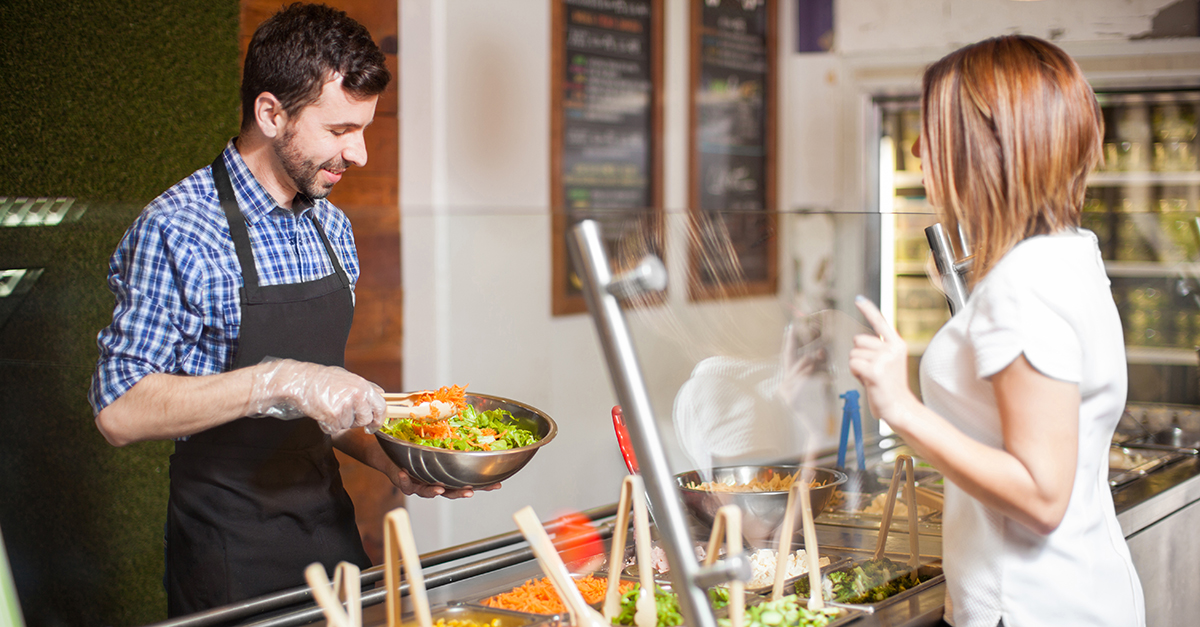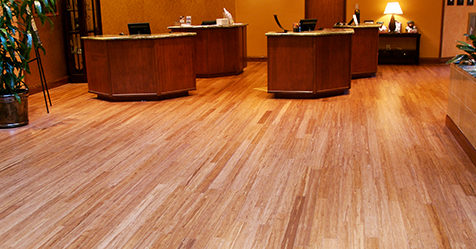Office workers, students, and visitors who pop into your facility’s cafeteria for a sandwich don’t want to revisit the meal through a case of salmonella. This foodborne illness is one among many caused by bacteria and viruses that can contaminate food and surfaces in commercial kitchens. It takes proper training and education, stellar hygiene practices, safe food preparation, and more to protect diners. Turn to the experts for best practices in keeping your building inhabitants safe from foodborne illnesses.
Meet the usual culprits
“To defeat the enemy, one must know it first,” said Jason Welch, a microbiologist at Spartan Chemical Co. Inc. There are quite a few enemies to know, including salmonella, E. coli, shigellosis (caused by Shigella bacteria), listeria, and norovirus. The norovirus, in particular, is a cause for concern, as it needs only seven particles for transmission. This makes it exceptionally difficult to eliminate from kitchens.
According to Welch, foodborne illnesses result from the improper handling of raw food or are spread through the fecal-oral route. The former includes mistakes like using the same cutting board for meat and produce, allowing perishable food to remain at room temperature, and failing to fully cook meat. In the latter, illness can spread through the fecal-oral route when workers don’t properly wash their hands after using the restroom and then handle food.
Common carriers of foodborne illness include raw or undercooked meat; eggs and other poultry products; dairy products, including ice cream and cheese; contaminated water sources; fruits; and vegetables.
Foodborne illnesses generally cause nausea, vomiting, diarrhea, fever, and abdominal cramps. These symptoms can be severe and last for several days, resulting in dehydration. Children, pregnant women, and the elderly are at greater risk of severe symptoms and complications, including hospitalization and death. The good news is that food handlers and cleaning crews can minimize the risk of diners contracting foodborne illnesses by maintaining a well-sanitized commercial kitchen.
Enroll in safe food preparation 101
Welch explains that the best food preparation practices come down to the three Ps: people, procedures, and cleaning products. When you have well-trained, professional people staffing the kitchen, they’ll follow the proper sanitation procedures to keep everyone safe, such as using the most effective products.
Little mistakes can cause big illnesses. Take the advice of both Welch and Julie Howard, vice president and general manager of GP PRO’s towel category, by training your staff on the following:
- Latex glove use: Make sure to change gloves every time you change tasks. And remember to wash your hands every time you change your gloves. Gloves don’t replace proper handwashing.
- Chemical handling: Use cleaning chemicals at the proper concentration and temperature; some chemicals need certain temperatures to work properly . Change sanitizing solutions frequently, including bleach, which deteriorates and loses its ability to kill pathogens after 15–20 minutes of use. Make sure all your chemicals are properly labeled and that you follow the directions on the label.
- Cleaning cloths: Cotton is a negatively charged particle, while cleaning chemicals are positively charged. When you combine cotton with cleaning chemicals, it binds up the active ingredients and neutralizes them. Instead, use microfiber or rayon cloths.
- Cleaning products: You must clean before you sanitize. Physically scrape away large debris before applying a cleaner, then scrub the surface and let the cleaner soak in for the time indicated on the label before rinsing. Follow up with a surface sanitizer.
- Cleaning schedules: Create a cleaning schedule that outlines which areas of the kitchen need to be cleaned and how often.
- Hand hygiene: Proper hand hygiene is critical in preventing the spread of germs in a commercial kitchen. Hand sanitizer isn’t a substitute for handwashing. Remove jewelry from your hands before washing them, as jewelry can harbor bacteria. Maintain short fingernails.
- Sick-time policies: Ill staff should never be allowed to work in a commercial kitchen. Encourage staff to stay home when they are feeling unwell and to seek medical attention if necessary.
Scrub in with proper hand hygiene
Workers in a commercial kitchen need to perform hand hygiene regularly, such as before preparing food and after touching bacteria-prone foods, such as raw poultry, meat, and fish. Proper hand hygiene includes washing hands with soap and water for at least 20 seconds, and then completely drying hands with a clean, dry paper towel.
“Handwashing is only half of the hygiene equation,” Welch said, explaining that hand drying is the other half. If we aren’t drying our hands, then we aren’t getting the full benefit of having washed them in the first place, because wet or damp hands are more easily contaminated than dry ones.
The friction of rubbing a paper towel against the skin helps remove any germs left on the skin after handwashing. A single-use paper towel reduces the likelihood of cross contamination from a multiuse towel. Be sure to dry between the fingers, the backs and palms of the hands, and the wrists.
“Touchless paper towel dispensers became the standard during the COVID-19 pandemic because you only touch the paper towel you need to dry your hands,” Howard said. Less touchpoints reduce the risk of cross-contamination.
In addition, dispensers cover and contain unused towels, which helps ensure the paper towel is clean, dry, and hygienic. In a commercial kitchen, cross-contamination is a significant concern, and many facilities have cross-contamination prevention strategies in place to reduce its likelihood. Reducing touchpoints is a critical component of such a strategy, and touchless dispensers support that.
Create a safe food prep area
Both the U.S. Food and Drug Administration (FDA) and the U.S. Centers for Disease Control and Prevention (CDC) provide clear guidance on how to maintain food safety at home and in a commercial kitchen. In four words: clean, separate, cook, and chill. The emphasis is on clean hands and surfaces. To that end, a safe food prep area should include a dedicated sink for handwashing with easily accessible and stocked touchless soap and paper towel dispensers.
In addition to using touchless dispensers, the entire hand soap system should be closed to reduce the risk of cross-contamination. Bulk hand soap dispensers that employees open to refill can become contaminated with airborne germs, bacteria, or other microorganisms. With a closed hygienic system, the soap refill, pump, and nozzle are factory-sealed and replaced every time the soap needs refilling. This helps ensure the soap itself is sanitary.
To minimize the risk of contamination in an industrial kitchen, Tyler Johnson, manager of GP PRO’s Foodservice wiper category, recommends preserving the integrity of your cleaning products. Be sure to switch cloths every time you clean a new surface or when your cloth becomes visibly soiled. You can also forgo reusable cloths completely for disposable wipes. With disposable wipes, you can eliminate the time and cost of laundering cloths and reduce the frequency of changing cleaning solution. Be sure to use a new wipe when switching surfaces or when a single surface is extremely soiled.
No food service operator or commercial kitchen wants to expose patrons to an unsanitary facility or put them at risk of acquiring a foodborne illness. Whether you are sanitizing tables, food prep surfaces, condiment containers, or any other high-touch surface, consider products and processes that will enable you to do the job more efficiently and effectively, while ensuring patrons leave as healthy as they were when they arrived.



